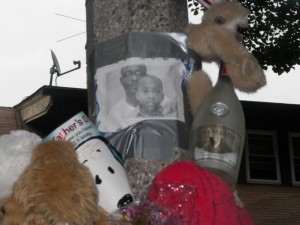Guest Post By: Shawnee M. Daniels-Sykes, Ph.D., Mount Mary University (Milwaukee, Wisconsin)
Essentially, for Pope Francis “a sense of deep communion with the rest of nature cannot be realized if our hearts lack tenderness, compassion, and concern for our fellow human beings…Concern for the environment thus needs to be joined to a sincere love for our fellow human beings, and an unwavering commitment to resolving the problems of society.” (LS 91)
Here Pope Francis speaks once again in his 2015 encyclical, Laudato Si, to the intimate connection between human life and environmental ecology. My reflections focus on one aspect of environmental racism that, arguably, also needs to be included in this discussion on human life and environmental ecology. Environmental racism, I submit, refers to the notion that race interpenetrates social class in the United States and is often a more potent prediction of which communities or populations are disproportionately impacted by human and environmental adversities. In this example, environmental racism is primarily found in urban and/or economically poor communities of color in the United States, especially given the highly disproportionate rate of gun violent homicides. The public construction of thousands of death shrines, or what I am titling memorial acclamations, to mark these homicides can provide us with concrete images of the interconnectedness between human life undercut by environmental racism.
It is important to note, however, that these memorial acclamations are not merely constructed to recall the life, death, and resurrection of Jesus Christ; they also point to the life and tragic death of human beings, created in the image and likeness of God. These deaths coincide with the displays in the environment containing sacred and secular objects or artifacts, such as poster boards filled with acclamations in honor of the deceased person(s), crosses, crossed candles, lit candles, mylar/helium balloons, teddy bears, plush stuffed animals, food, drink, photographs, and clothing. These artifacts are most commonly found hung on trees, tree trunks, lampposts, and telephone posts; they are constructed outside of churches, in children’s playgrounds, streets and alleys and/or are seen on porches, sidewalks, grass, rocks, and soil. Regularly, when one moves through urban communities of color, it is not uncommon to discover these environmental depictions. Although they are symbolic of sympathetic faith-filled responses to the sudden and devastating loss of human lives, they represent deeper human and ecological problems. For example, what happens when these artifacts get old, weather beaten, and ugly? How are those who constructed these acclamations emotionally impacted?
Conversely, weekly, monthly, or annual homicide reports are extremely rare, concerning a barrage of gun violent deaths and the subsequent spontaneous construction of these memorial acclamations in majority white, suburban, and/or affluent communities. This realization that unearths the environmental racial divide between communities is yet to be fulfilled in LS 91. Pope Francis’ deep and abiding yearn for human and environmental ecological flourishing must be attained, ultimately, by all of creation. For him, joined by compassionate love and care for fellow human beings, human and ecological flourishing can be achieved, resulting in a resolution or an end to the barrage of gun violent homicides underscored by environmental racism. Laudato Si!



